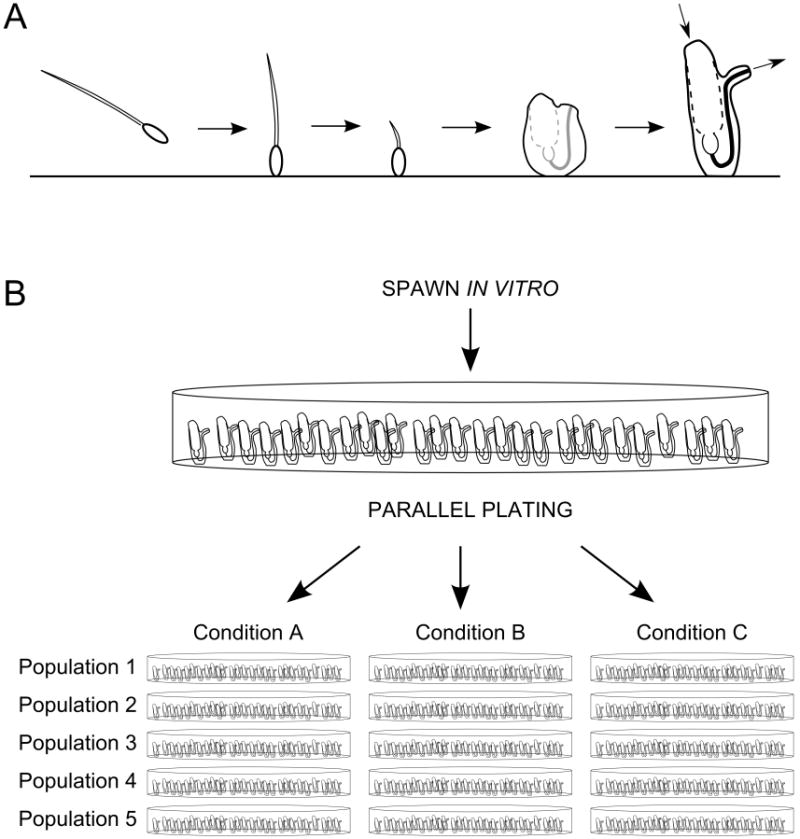Figure 3.

(A) Life cycle of Ciona intestinalis, including from left to right: swimming tadpole larva stage, attached larva, tailbud retraction and onset of metamorphosis, early juvenile (not feeding; unopened siphons) and adult (with siphon flow indicated by arrows). (B) Illustration of high-throughput, parallel experiments using the Ciona system to investigate the response of five parallel populations of idividually attached Ciona to three experimental conditions (standard tissue culture dishes shown). “Populations” are interchangeable with “replicates;” additional replicates allow the production of more genetic material for study. Pooled replicates from different genetic backgrounds can also be performed to strengthen observations.
